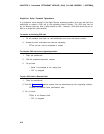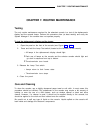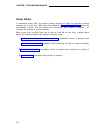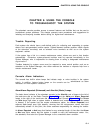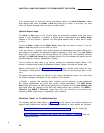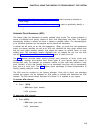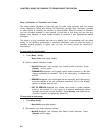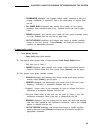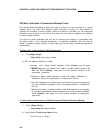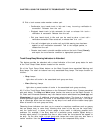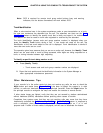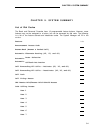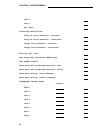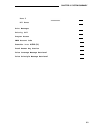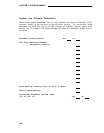
CHAPTER 8. USING THE CONSOLE TO TROUBLESHOOT THE SYSTEM
DCS Busy Verification of Terminals and Remote Trunks
This feature allows attendants to place test calls to trunks and voice terminals at a remote
location within the same DCS network. Busy Verification provides an easy method of
checking the condition of these facilities.
When the feature is activated, you can distinguish
between a voice terminal or trunk that is truly busy and one that only appears busy because
of some trouble condition.
The result of a busy verification test may be an intercept tone, display, or conversation with
the called facility. In the following procedures, a successful verification tells you that the
facility is probably working properly; a failure tells you that the facility should be reported for
maintenance.
To busy verify a voice terminal in DCS environment
1. Press (Busy Verify).
• Busy Verify lamp lights steadily.
2. Dial the desired extension number.
• Intercept tone heard—invalid extension. Press (Cancel), and try again.
• DENIED displayed, and reorder tone heard
—a trouble condition exists on the
DCS link. Press (Cancel), and report the out-of-service condition to the
appropriate personnel.
• Ringback is heard—called extension is idle and ringing—verification is
successful. Talk to the called party, or release from the call.
• Your call is bridged onto an active call, and initial warning tone was applied to
the call—verification successful. Talk to the bridged parties, or release from
the call.
• Reorder tone heard—a trouble condition exists at the terminal or it may apply
to a terminal administered without hardware and not be a trouble condition.
Press (Cancel), and report the out-of-service condition to appropriate
personnel.
To busy verify a remote trunk in a DCS environment (Simple Verification Method):
1. Press (Busy Verify).
• Busy Verify lamp lights steadily.
2. Press desired Trunk Group Select button.
• Dial tone—go to Step 3.
8-6



